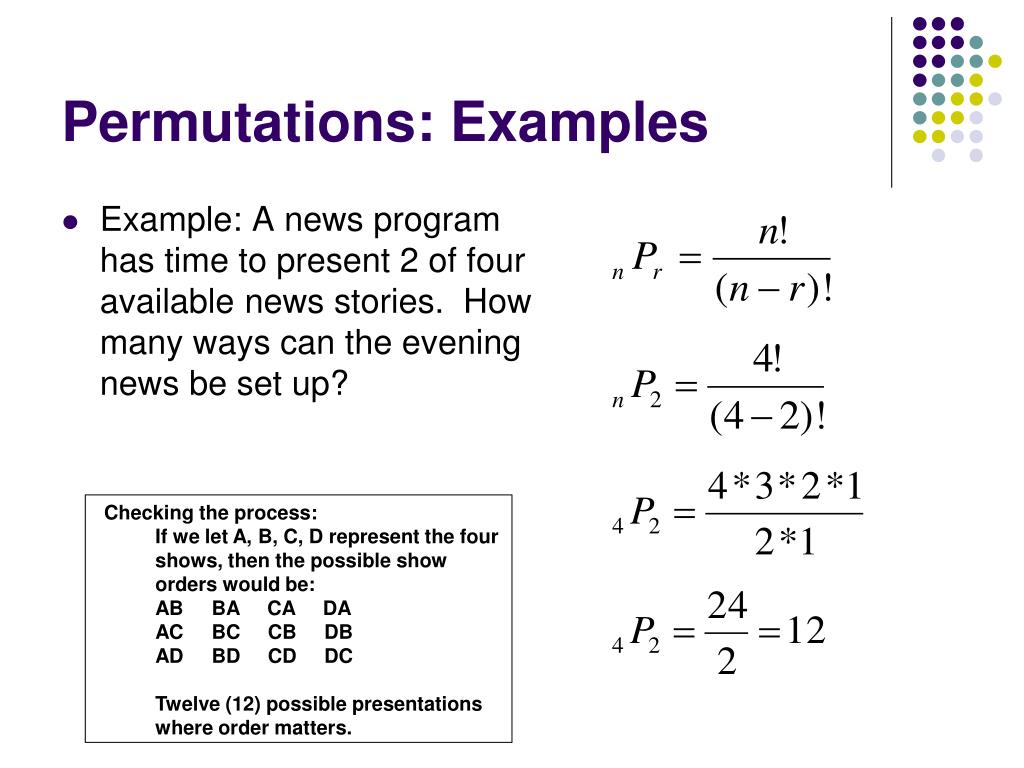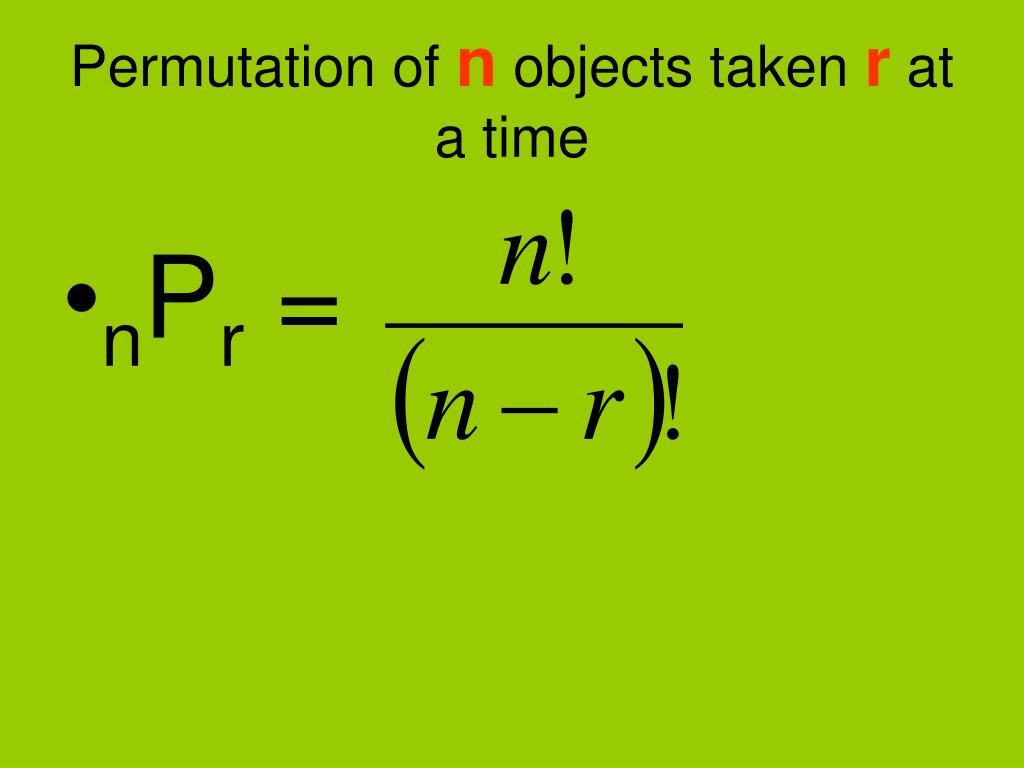
So that computing it would take a lot of effort. The answer then is 4!!!! The number is quite big (how big?).

two followed by two factorials.Īnd finally, 0 = 0 followed by zero factorials - a result of doing nothing. three followed by three factorials.Ģ = 2! = (2!)!, i.e. (n - 1)! ways to count an n-element set.For each of these, by definition, the remaining (n-1) elements can be counted in (n-1)! ways. For example, arranging four people in a line is equivalent to finding permutations of four objects. Essentially this can be referred to as r-permutations of n or partial permutations, denoted as nPr, nPr, P(n,r), or P (n,r) among others. In combinatorics, a permutation is an ordering of a list of objects. There are n ways to select the first element. A permutation of some objects is a particular linear ordering of the objects P(n,k) in effect counts two things simultaneously: the number of ways to choose. Permutations The calculator provided computes one of the most typical concepts of permutations where arrangements of a fixed number of elements r, are taken from a given set n. Let's try mimicking this for a set of n elements. Look at the six permutations of a 3-element set.

The remaining element automatically goes to the fourth place. There remain only three candidates for the second position and, after this was selected, only two candidates for the third position. What's 4!? There are 4 ways to select the first element. I placed the answer to the question at the bottom of this page. Guess the next number in the following sequence However, the result of this activity is nothing or, in math parlance, 0. There is just one way to do nothing so that 0! = 1. To find the number of combinations of n objects taken r at a time, divide the number of permutations of n objects taken r at a time by r. In how many different ways can five people be seated at. ) Since there is nothing to count the question is In how many ways can one do nothing? A mathematical answer to this is just one: 0! = 1. Circular Permutations: The number of permutations of n elements in a circle is (n 1). In other words, the set V can be brought into a 1-1 correspondence with the set. Im working through the textbook A Course in Enumeration.In the section about permutations and Stirling numbers, Im having trouble understanding problem 1.45. A set V consists of n elements if its elements can be counted 1, 2., n. Then a comma and a list of items separated by commas. p e r m ( n, k ) = n P k = n ! ( n − k ) ! math.perm(n, k) = nP_ ma t h. The 'has' Rule The word 'has' followed by a space and a number. A permutation is a concept in math that outlines the number of ways in which a particular set of data can be arranged. The function returns an integer that corresponds to the result from the following formula: But, how do I compute the number of possible permutations in a list, given that I can arbitrarily remove any number of el. For example, math.perm(4) returns 4!, i.e., 24. If we do not provide it, this method will return n!. You can use the math.perm() function in Python versions 3.8 and above. To find a number of words starting with E and ending with I, let us consider their position which is 1st. This function was recently introduced Python 3.8. Keywords: Permutations Signature Random numbers Zig-zag sequence Updown. Hence, the total number of permutations is P 5040. Amongst some of the most important functions in this module, the perm() function has its own importance. Another definition of permutation is the number of such. The math module in Python contains a number of mathematical operations that can be performed very easily. A permutation is an arrangement of objects, without repetition, and order being important.

The math.perm() function in Python is used to return the number of permutations of k items from a group of n items, i.e., it helps us figure out the number of ways in which we can choose k items from n items with order and without repetition.


 0 kommentar(er)
0 kommentar(er)
